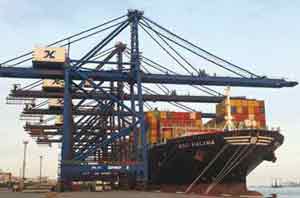A way of ensuring credit is worthy
Updated: 2011-11-11 11:14
By Zhu Ning (China Daily European Weekly)
|
|||||||||
Regulators are keeping a sharp eye on the real estate sector, which is a very good start
 |
Several researchers at credit rating agencies and investment banks have voiced concerns about the creditworthiness of Chinese sovereign debt. In 1996 the American journalist Thomas Friedman said ratings agencies could destroy a country or a company by downgrading its bonds. With Chinese economic growth contributing the most to the global economic growth in the past few years, you have to wonder whether the opinions by the ratings agencies are just self-serving marketing or even a conspiracy to drive down Chinese sovereign credit. Or are there genuine concerns about the credit worthiness of Chinese government bonds?
Most researchers who are expressing concerns are particularly worried with the asset quality in Chinese banks, which helped China navigate through the 2008-2009 global financial crisis largely intact, by providing aggressive credit to the economy. Now that the government has tightened fiscal and monetary policy and policies aimed at cooling the red-hot real estate market, some worry that a collapse of the real estate sector may drag down banking and Chinese economic growth altogether.
It is important to note that the regulators have been watching the situation vigilantly. Liu Mingkang, former chairman of the China Banking Regulatory Commission, recently said that Chinese banking could withstand home price drops of up to 40 percent from current levels.
On one hand, the message is encouraging, especially given that the regulatory authority has already increased the amount of down payment, hence reducing the leverage of home buyers and the risk exposure by the banks. On the other hand, by being required to set aside a higher level of reserves, the banks are relatively better prepared for any under-capitalization problems similar to ones that many financial institutions in the West have faced.
The global financial crisis of 2008 and the Southeast Asian financial crisis in the late 1990s exposed a series of problem in the risk management technique now being widely used by banks and financial institutions. Although it is relatively straightforward to assess the credit risks related directly to home mortgage lending, it is always more challenging to identify the risks closely related to real estate but that take different forms and are therefore harder to control.
A couple of related events bolster this argument. A few months ago there were reports that some municipal investment companies, most of them financed or sponsored by local governments, might fail to come up with their interest payments. Given that most such companies invest heavily in local infrastructure, commercial and sometimes residential real estate development, it is little surprise that such companies are feeling the pinch after the government implemented the policies aimed at cooling house prices and tightening bank loan credit.
However, it is alarming that many such companies received their financing through local governments or explicit support from the same quarters. Unfortunately, such governments do not have a reliable stream of cash to support their own financing, apart from selling land, an activity that dwindles in a period of policy tightening.
Asked why the market does not demand a higher risk premium for stocks and bonds issued by such municipal investment companies, a veteran trader voiced a view no doubt held by many of his peers, that "the local government's credit is after all the central government's credit as the central government will not sit and let local government go bankrupt".
Recent events in Wenzhou, Zhejiang province, lend support to that sentiment. A dozen high-profile manufacturing entrepreneurs in Wenzhou, renowned for its entrepreneurial spirit and savvy investment style, went missing. It turned out that the entrepreneurs had taken out vast amounts of debt bearing highly onerous interest rates (in some cases more than 50 percent a year) through informal lending practices that have become prevalent in Wenzhou and many other cities.
Of course, there are some very deep issues related to why such entrepreneurs take out so much debt with such huge interest rates, especially given that the primary business of manufacturing runs at profit margins that are razor thin.
The government reaction to what happened in Wenzhou merits further scrutiny. The local government took immediate action to try to obtain emergency funding from the central government in an attempt to bail out the distressed companies. That did not materialize. However, it all provided an interesting insight into the intertwining relationship between corporate credit, local government credit, and central government credit.
The Chinese government now faces a challenge, the like of which has not been seen in a couple of decades, of taming inflation and the asset bubble. If it is indeed the case that many of the troubled entrepreneurs took out high interest debt to invest in highly risky speculation in the red hot real estate sector, the result may be a little different to what they bargained for should the real estate market cool off as the policy makers wish.
In an era when vegetable peddlers and senior management at leading State-owned-enterprises all boast the merits of real estate development and investment at the same time, it is conceivable that housing prices will not only upset the balance sheet of almost all Chinese households, but also those of enterprises small and large. The question then is whether the central government has the resolution, and resources, to bail out troubled local governments and enterprises. If it does, what effect will that have on the central government's credit ratings?
In contrast with its counterparts in most other countries, where central and local governments have different financial models and support their respective financing with different kinds of fiscal revenue, one has to look beyond the central government's own creditworthiness, and consider the creditworthiness of the local government and enterprises to properly assess China's sovereign credit rating.
If one is concerned about the sustainability of Chinese real estate prices and then considers the ramifications of that on the quality of banks' and financial institutions' assets, there may be reason to be cautious with the outlook of the credit worthiness of the Chinese central government.
Of course, there are immediate steps the government can take to allay concerns of this sort. Fortunately the government has already started considering such challenges and come up with several solutions.
First and foremost, the government is working hard to change the country's economic growth model. China has experienced momentous economic growth in the past 30 years, and the traditional export-oriented economic growth model can no longer be sustained, given increasing labor costs and the cost of living. On one hand, one of the main aims of economic growth that people envisioned when China first started its reform and opening up policy has been achieved. On the other, such success means that China needs to reconsider its economic models as the country gradually loses its advantage in the low labor-cost and low value-added manufacturing model that relies heavily on exports.
To ensure its future economic growth and political stability, China would have to foster the growth of a large middle-class population, which can provide not only the kind of growing domestic consumption to spur future economic growth, but also the monetary and human capital that are crucial to future economic growth. The growth of the middle-class population will also provide enough income and business activity for local government tax revenue, so that those governments will rely less on land sales for income, which creates and aggravates many social problems.
Second, to provide an outlet for local governments to meet their fiscal needs and for enterprises to meet investors, China should speed up measures to develop a bond market that is compatible with the country's economic growth, in size and scope. To local government, the bond market can provide a sustainable source of financing. At the same time, it would force local governments to internally balance short-term aims and long-term liabilities and provide an intrinsic check on local governments' development decisions.
Further, the bond market could not only provide an important alternative to the Chinese equity market in its ability to raise capital, but also provide important monitoring and corporate governance mechanisms, which the Chinese equity market has been struggling with since its inception.
Last, but certainly not least, progress is needed in having interest rates truly determined by market forces. Interest rates, as the price of capital, sends crucial signals to businesses and households as to when and what to invest or consume. Interest rates also serve as the benchmark for all types of risk-taking activity such as entrepreneurship or real estate development. Letting the market figure out the price of capital, the price of risk, and the price of credit holds the key to solving many of the challenges that the Chinese financial system has been facing for a long time.
The author is deputy director of the Shanghai Advanced Institute of Finance. The opinions expressed in the article do not necessarily reflect those of China Daily.











